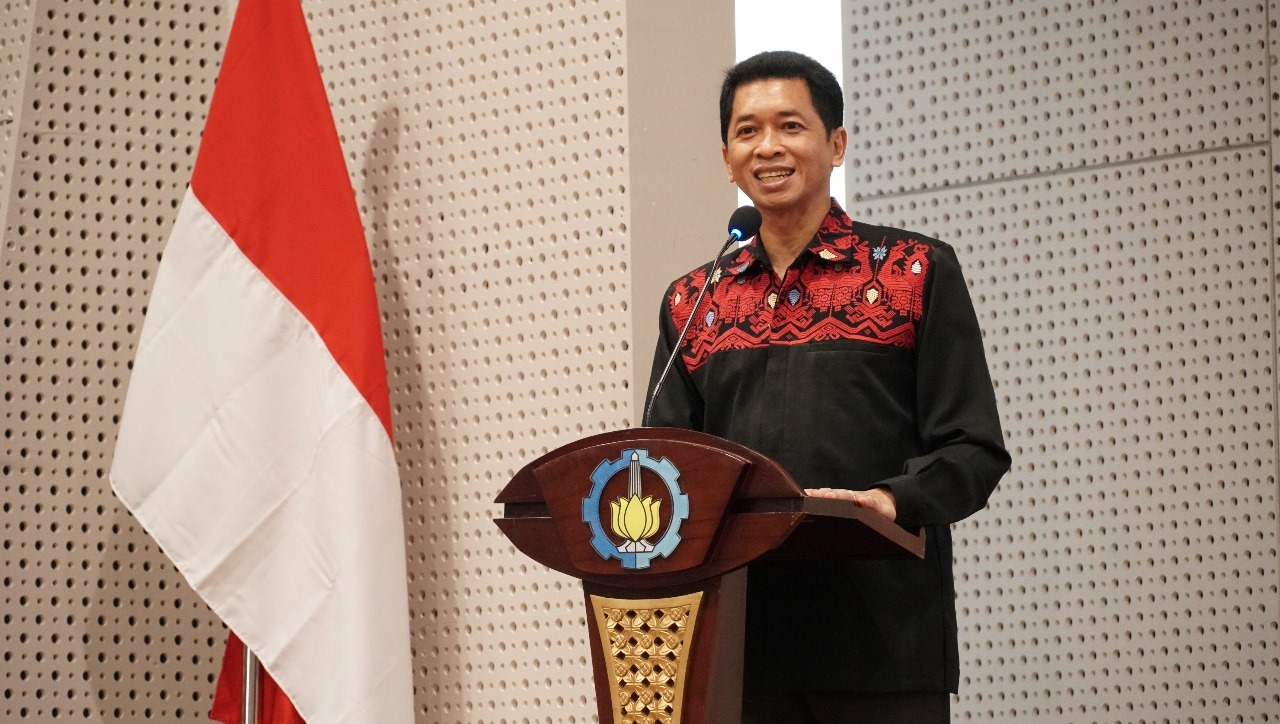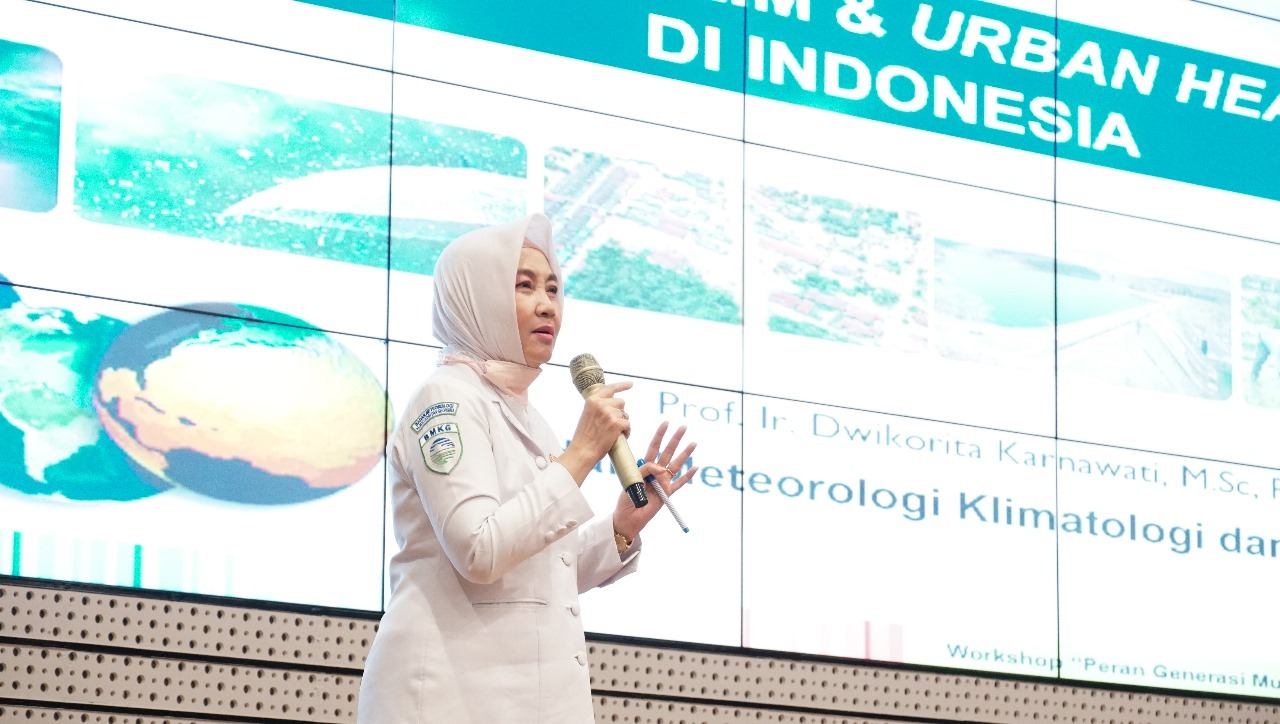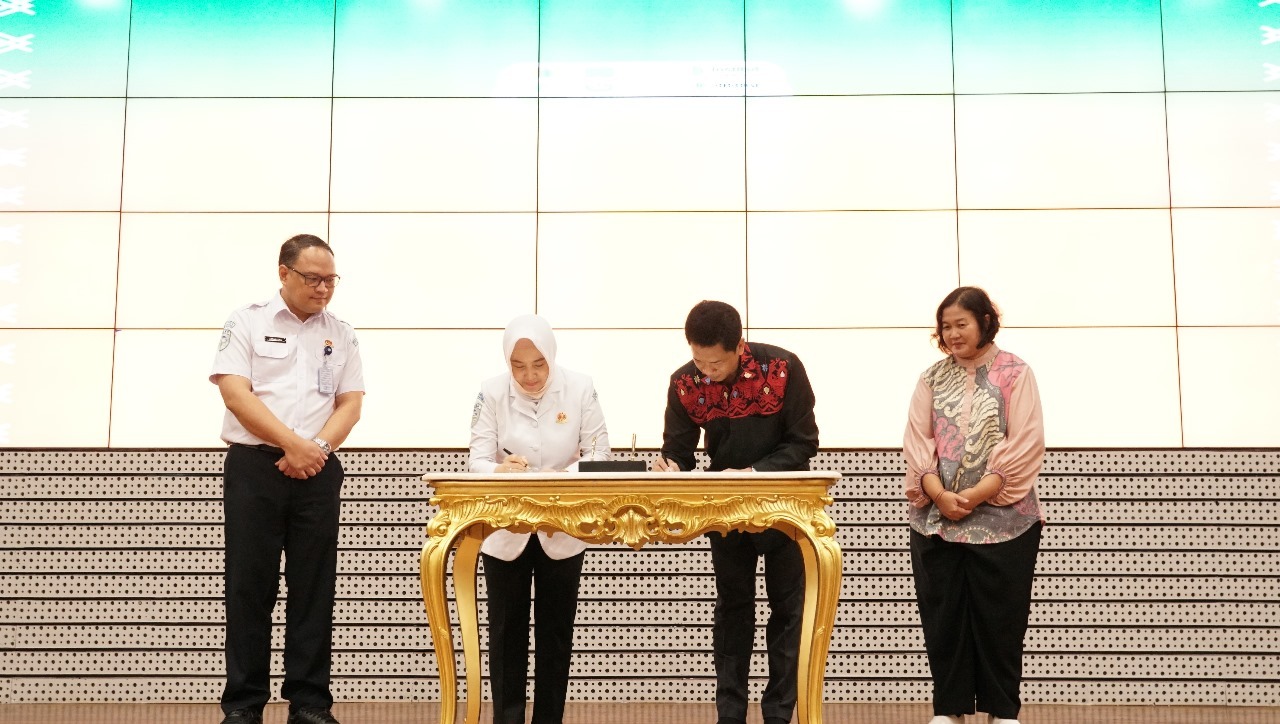ITS and KLHK Invite Young Generation to Anticipate UHI Dangers
 ITS Rector Ir Bambang Pramujati ST MSc Eng PhD explaining the Urban Heat Island (UHI) phenomenon currently occurring in various parts of the world.
ITS Rector Ir Bambang Pramujati ST MSc Eng PhD explaining the Urban Heat Island (UHI) phenomenon currently occurring in various parts of the world.
ITS Campus, ITS News —The increasing density of buildings in urban center areas is directly linked to rising temperatures in those regions. This phenomenon, known as the Urban Heat Island (UHI), has prompted Institut Teknologi Sepuluh Nopember (ITS) in collaboration with the Ministry of Environment and Forestry (KLHK) of Indonesia to discuss the role of the younger generation in understanding UHI and recognizing its dangers. This discussion took place during a workshop held at the ITS Research Center Building on Wednesday (26/6).
The event, held in celebration of World Environment Day 2024, was attended by ITS Rector Ir Bambang Pramujati ST MSc Eng PhD, Head of the Meteorology, Climatology, and Geophysics Agency (BMKG) Prof Ir Dwikorita Karnawati MSc PhD, and Director General of Pollution and Environmental Damage Control at KLHK Ir Sigit Reliantoro MSc. The event also partnered with the Green Institute of Indonesia.
In his speech, the ITS Rector explained that the Urban Heat Island is a natural phenomenon characterized by high temperatures in urban areas, which is currently being experienced by major cities around the world. “This phenomenon is worsening year by year, marked by increasingly rising temperatures,” stated the lecturer from the ITS Department of Mechanical Engineering.

Director General of Pollution and Environmental Damage Control at KLHK Ir Sigit Reliantoro MSc discussing one of the solutions to address the Urban Heat Island.
Prof Bambang explained that the UHI phenomenon is caused by the ever-growing industrial sector. However, this development is inevitable as industrial growth is also needed by society. “We must strive to minimize environmental damage caused by industry,” he hoped.
Echoing Bambang’s statement, the Head of BMKG explained that all cities in Indonesia show a significant temperature increase trend of between 0.2 to 1 degree Celsius over 30 years. Additionally, Indonesia is also experiencing an annual increase in carbon concentration trends. “As of now, the carbon concentration in the air has reached 415 ppm,” he elaborated.

Head of BMKG Prof Ir Dwikorita Karnawati MSc PhD explaining the factors causing the Urban Heat Island.
Dwikorita explained that several factors contribute to UHI, including the complex geometric structure of cities, limited vegetation, and the greenhouse effect. Additionally, the conversion of land cover to built-up areas exacerbates the occurrence of UHI. “The high thermal capacity of building materials also results in greater heat absorption,” explained Dwikorita.
Following Bambang and Dwikorita’s explanations, Sigit stated that the solution to tackling UHI lies in the climate optimism movement. In this movement, the community must connect with each other, continually update information related to UHI, focus on finding solutions, and strive to educate others. “This mindset can be the first step in addressing UHI,” he reminded.

ITS Rector Ir Bambang Pramujati ST MSc Eng PhD (second from right) and Head of BMKG Prof Ir Dwikorita Karnawati MSc PhD (second from left) signing the MoU between ITS and BMKG.
Before the workshop began, the event also included the signing of a Memorandum of Understanding (MoU) between ITS and BMKG to enhance cooperation in education, research, and community service. This collaboration is expected to fulfill BMKG’s need to produce 500 new PhDs within its organization to further improve its quality and performance. (ITS Public Relations)
Reporter: Mohammad Febryan Khamim
Related News
-
Anticipating Lost Pet Dogs, ITS Students Invent a Tracking Bag
ITS Campus, ITS News —Losing a pet is a sad thing for its owners. To anticipate this, a team
June 30, 2024 23:06 -
ITS Students Integrate Smart City Service Features Through Visionaries
ITS Campus, ITS News — Institut Teknologi Sepuluh Nopember (ITS) continues to prove itself as a home for talented
June 30, 2024 23:06 -
ITS Students Innovate Eco-Quake Building Concept
ITS Campus, ITS News — Along with the development of technology, the construction sector has also experienced rapid growth
June 30, 2024 23:06 -
Great, ITS Successfully Becomes Overall Champion of the 2024 Indonesian Ship Contest
ITS Campus, ITS News — Proving itself as a home for champions, Institut Teknologi Sepuluh Nopember (ITS) managed to
June 30, 2024 23:06
